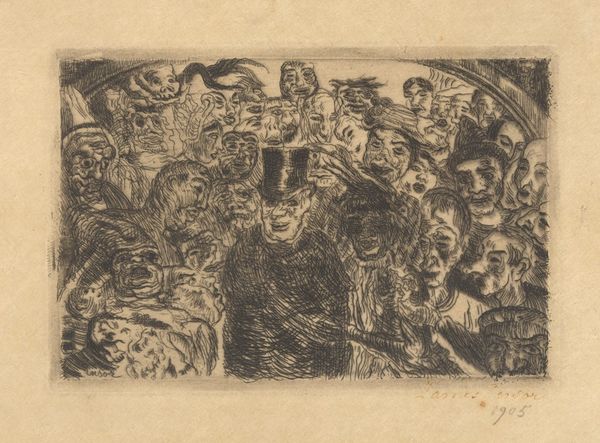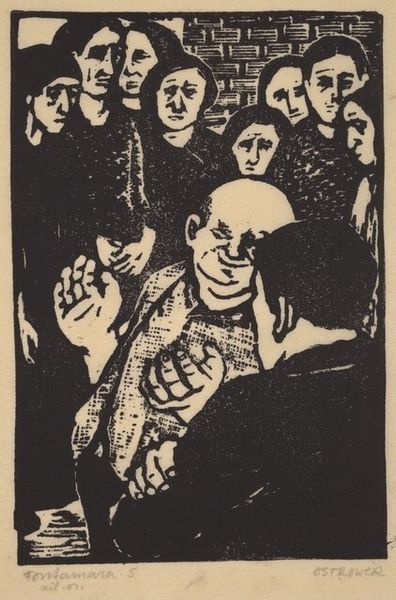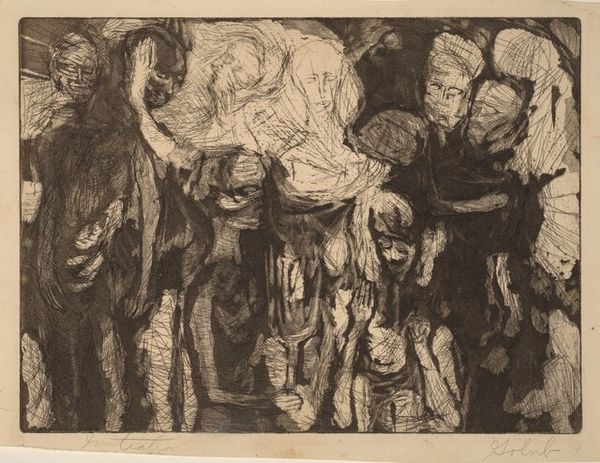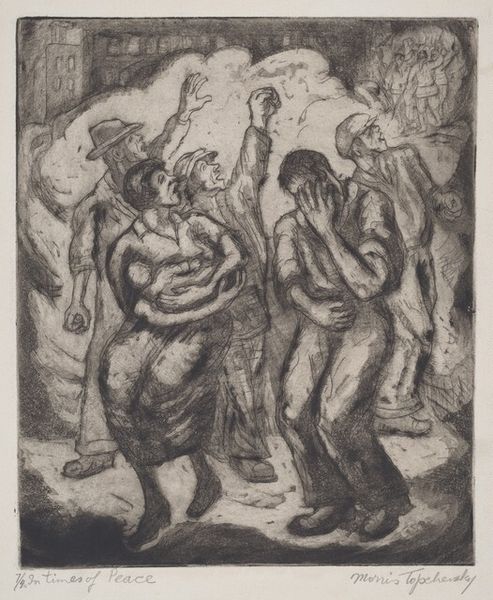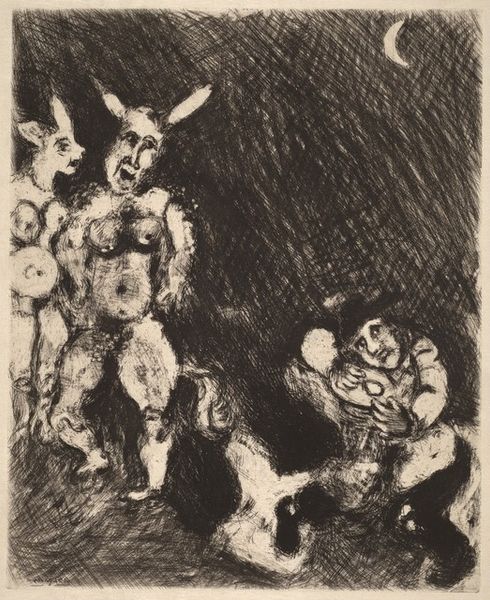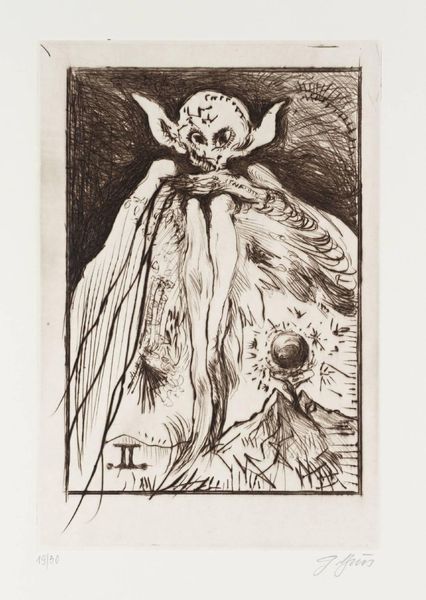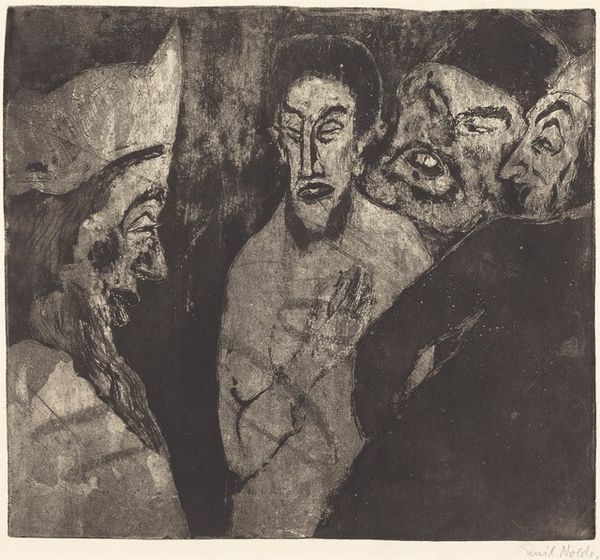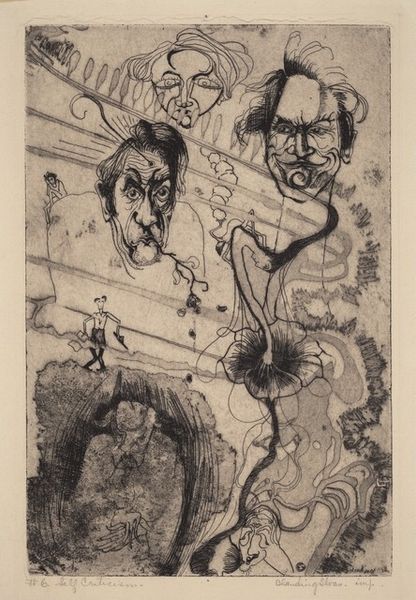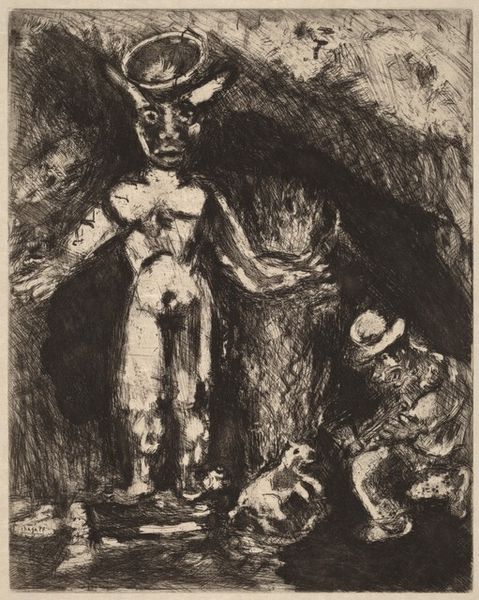
Death Dominating the Deadly Sins (Les Peches capitaux domines par la mort): front. 1904
0:00
0:00
drawing, print, etching, ink
#
drawing
#
pen drawing
# print
#
etching
#
figuration
#
ink
#
symbolism
#
history-painting
#
grotesque
Copyright: National Gallery of Art: CC0 1.0
Curator: Looking at "Death Dominating the Deadly Sins," an etching by James Ensor from 1904, the immediate impression is of… unrest. Editor: Absolutely. A disturbing unrest. There's a raw anxiety practically vibrating off the print. The chaotic energy and grotesque expressions are really affecting. Curator: Ensor often used these grotesque, almost cartoonish figures to portray humanity's flaws, and he was especially interested in how symbols evolve and how the imagery associated with Death continues to reflect humanity's changing fears and understanding of morality. Notice how Death is centrally staged; positioned directly above all. Editor: It's interesting how Death, as a symbol, is almost a traditional memento mori with the skull, but combined with what seems to be a bird's body. This adds an unsettling, predatory feel that complicates its meaning, no? The way Death is lording over this seething mass of people... I read that as commentary on structures of power, or lack thereof. Curator: Certainly, this isn't your medieval allegory with neatly labeled sins! Ensor merges older iconography with modern anxiety, reflecting how our perception of sin becomes less clear, less categorized. And yes, the skeletal, bird-like Death indeed evokes ideas of both mortality and imminent predatory action. Consider also that masks were one of Ensor's recurring symbols. Editor: The grotesque, almost masked faces speak to a hidden, darker reality within people. How sin itself is almost a performance or costume we put on, reinforcing how those in power maintain their status. This relates to contemporary sociopolitical climates, the masking of oppressive behaviors. Curator: Perhaps Ensor believed we are all masked players enacting our own internal struggles against desires and morality. But in doing so, this also reveals us. The act of masking exposes, even caricatures, our human frailties. It reveals the symbols that affect our behaviour. Editor: So, are these figures overcome by death, or consumed by their own deadly sins? Curator: I see both operating together; as sin exposes the grotesque truth of humanity, so too does death, in both senses leaving an unsettling image of power dynamics exposed by these symbols. Editor: It speaks volumes, or screams them, depending on how one chooses to see them. Either way, a challenging print to be certain, that remains quite relevant to our current moment.
Comments
No comments
Be the first to comment and join the conversation on the ultimate creative platform.
